What is Salmon Poke and How is it Made?
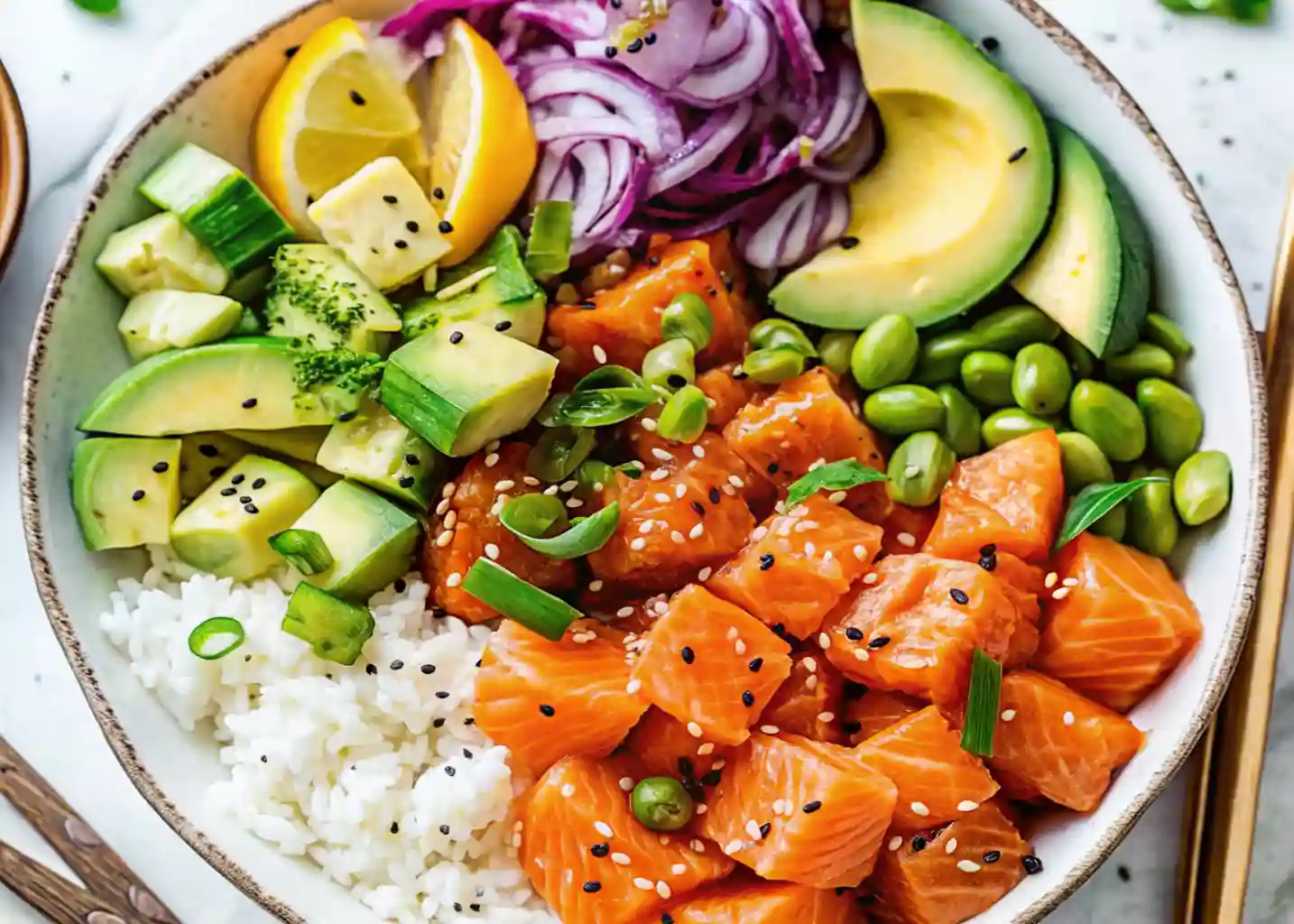
Salmon poke (pronounced poh-kay) is a well-known Hawaiian dish that has achieved worldwide fame for its fresh and lively flavors. Originating from traditional Hawaiian cooking, “poke” translates to “to slice” or “cut into pieces,” accurately depicting this dish. Salmon poke generally features chopped raw salmon, flavored with a mix of soy sauce, sesame oil, and various tasty elements such as green onions, seaweed, and sesame seeds. It is frequently presented atop a layer of sushi rice or greens, which provides a nutritious and tasty choice.
Table of Contents
A Taste of the Islands
Close your eyes for a moment and imagine waves gently lapping against a golden Hawaiian shoreline. The scent of saltwater fills the air, and the sound of ukulele music drifts on the breeze. Now picture yourself indulging in a bowl filled with vibrant colors, rich flavors, and a touch of aloha spirit. That, in essence, is salmon poke: a dish that brings the freshness of the islands to your plate while celebrating Hawaii’s deep connection to the sea. If you’ve been curious about this delightful dish, you’re in for a treat. Not only is it a feast for the senses, but it’s also incredibly simple to prepare.
What is Salmon Poke?
Comprehending the Definition of Poke
Let’s begin with the fundamentals: what is poke, precisely? The term “poke” (sounded as “po-kei”) signifies “to slice” or “cut through” in Hawaiian. Poke is a classic dish consisting of cubed raw fish, usually flavored with components such as sea salt, seaweed, and kukui nuts. Although tuna remains the classic option, salmon has emerged as a favored substitute due to its creamy texture and robust taste
A Short History of Poke
This cuisine is deeply entrenched in Hawaiian tradition, with origins spanning centuries. Native Hawaiians would make poke with freshly caught fish, flavoring it with natural ingredients found on the islands. As time passed, the dish developed, integrating Japanese elements like soy sauce and sesame oil. Today, poke is recognized globally for its adaptability, freshness, and lively tastes.
Key Ingredients of Salmon Poke
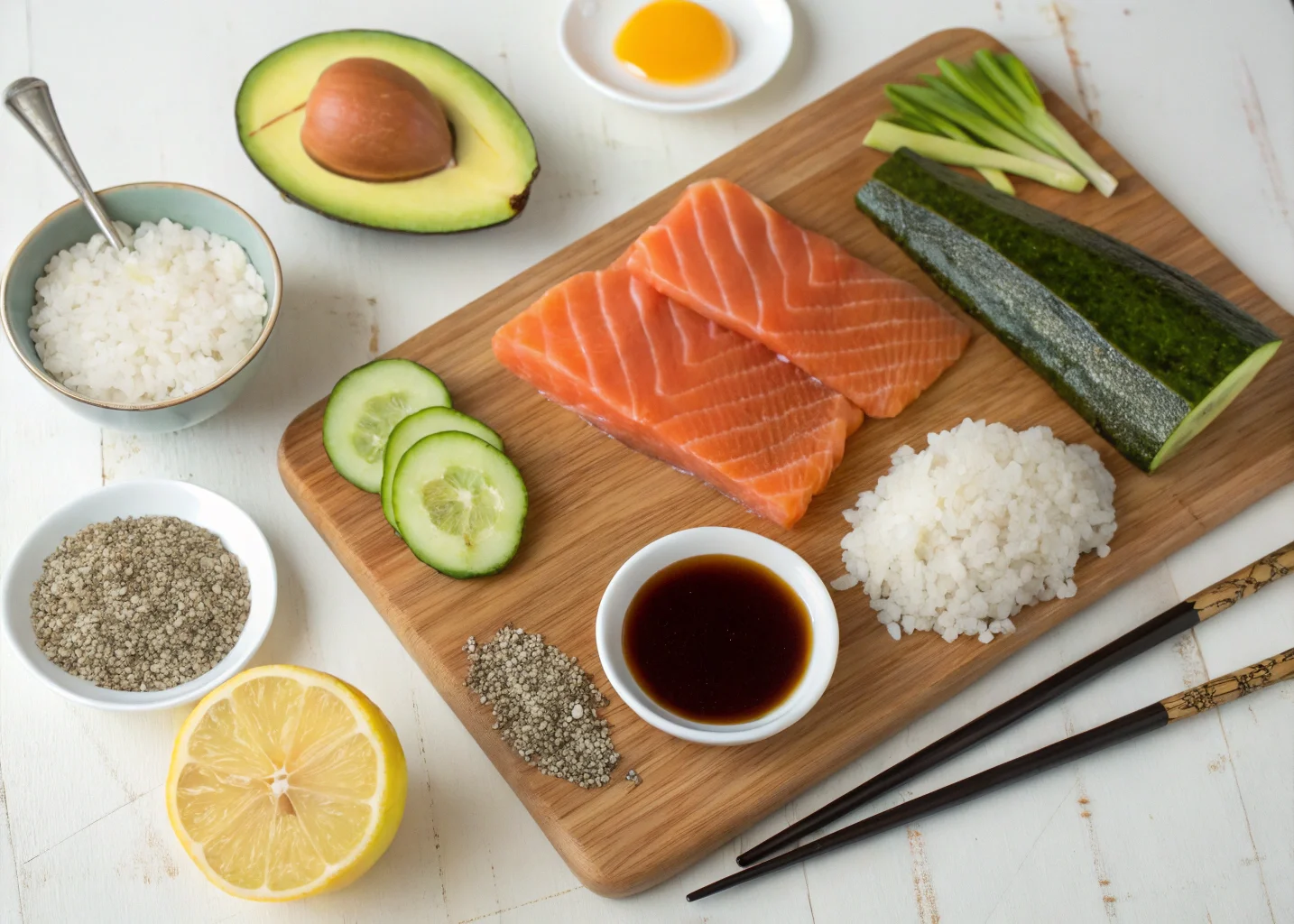
A great poke bowl is all about the perfect balance of ingredients. Here’s what you’ll need:
Base Ingredients
- Fresh, Sushi-Grade Salmon: This is the star of the dish. Look for high-quality, sushi-grade salmon to ensure both flavor and safety.
- Base Options: White rice, brown rice, mixed greens, or quinoa can serve as the foundation of your poke bowl.
Marinade Components
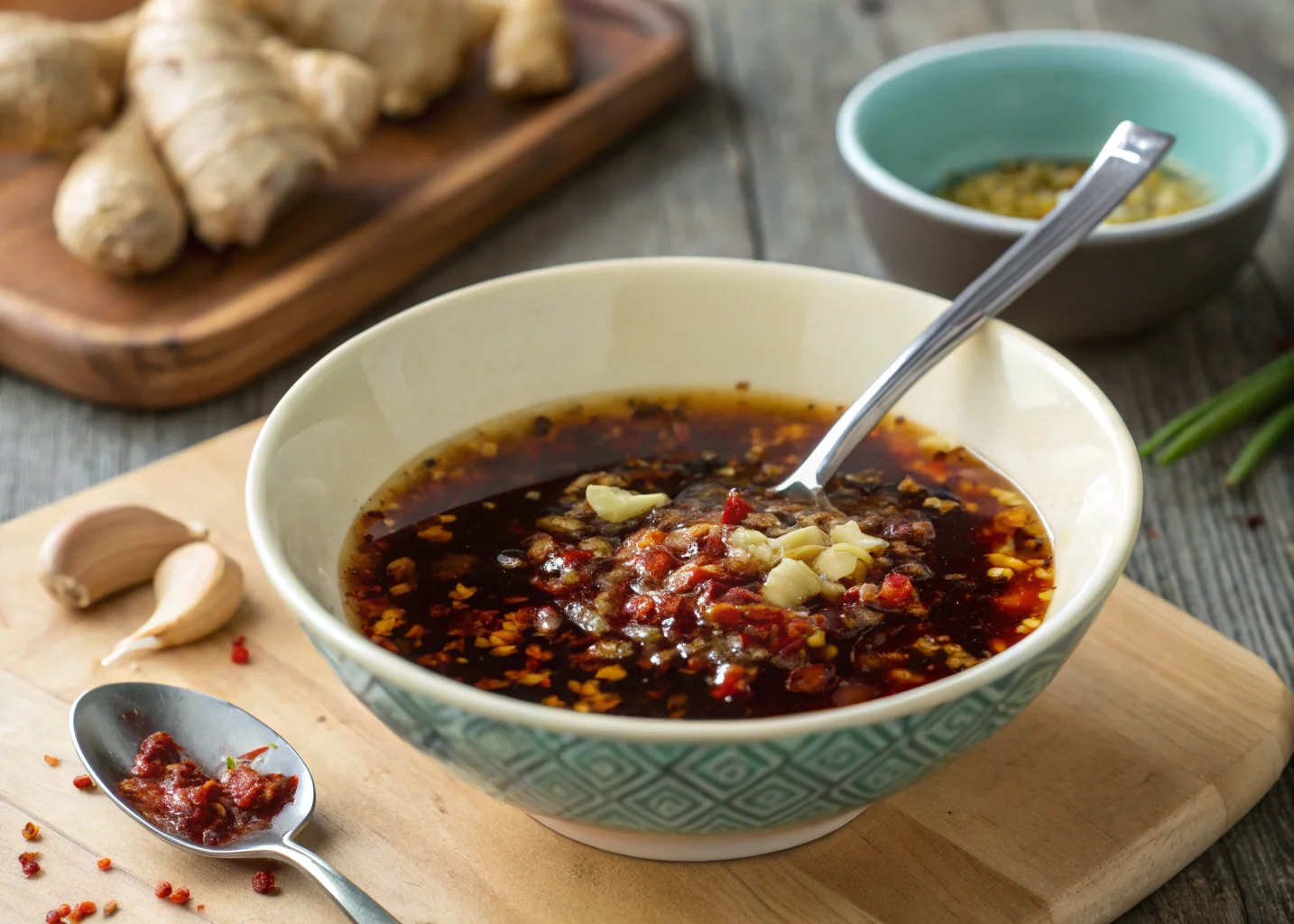
- Soy Sauce: Provides umami depth.
- Sesame Oil: Adds a nutty richness.
- Rice Vinegar or Lemon Juice: For a hint of tanginess.
- Optional Add-Ins: A teaspoon of honey or a splash of mirin can enhance the sweetness and balance the acidity.
Toppings and Garnishes
- Traditional choices: Seaweed, green onions, sesame seeds.
- Modern additions: Avocado, cucumber, pickled ginger, spicy mayo, or tobiko (fish roe).
- Crunchy elements: Crispy onions, fried garlic, or crushed macadamia nuts for texture.
How is Salmon Poke Made?
Step 1: Choose Your Salmon
A quality poke bowl starts with fresh, sushi-grade salmon. Go to a reliable fish market or specialty shop to guarantee quality. After obtaining your salmon, carefully trim it and cut it into even, bite-sized cubes. To achieve the ideal texture, target cubes that are roughly 1/2 inch in dimension.
Step 2: Create the Marinade
In a medium-sized bowl, combine soy sauce, sesame oil, and rice vinegar. To enhance the flavor, think about adding chili flakes, grated ginger, or chopped garlic. If you enjoy a touch of sweetness, stir in a teaspoon of honey or brown sugar. The marinade needs to balance savory, tangy, and a touch of sweetness.
Step 3: Marinate the Salmon
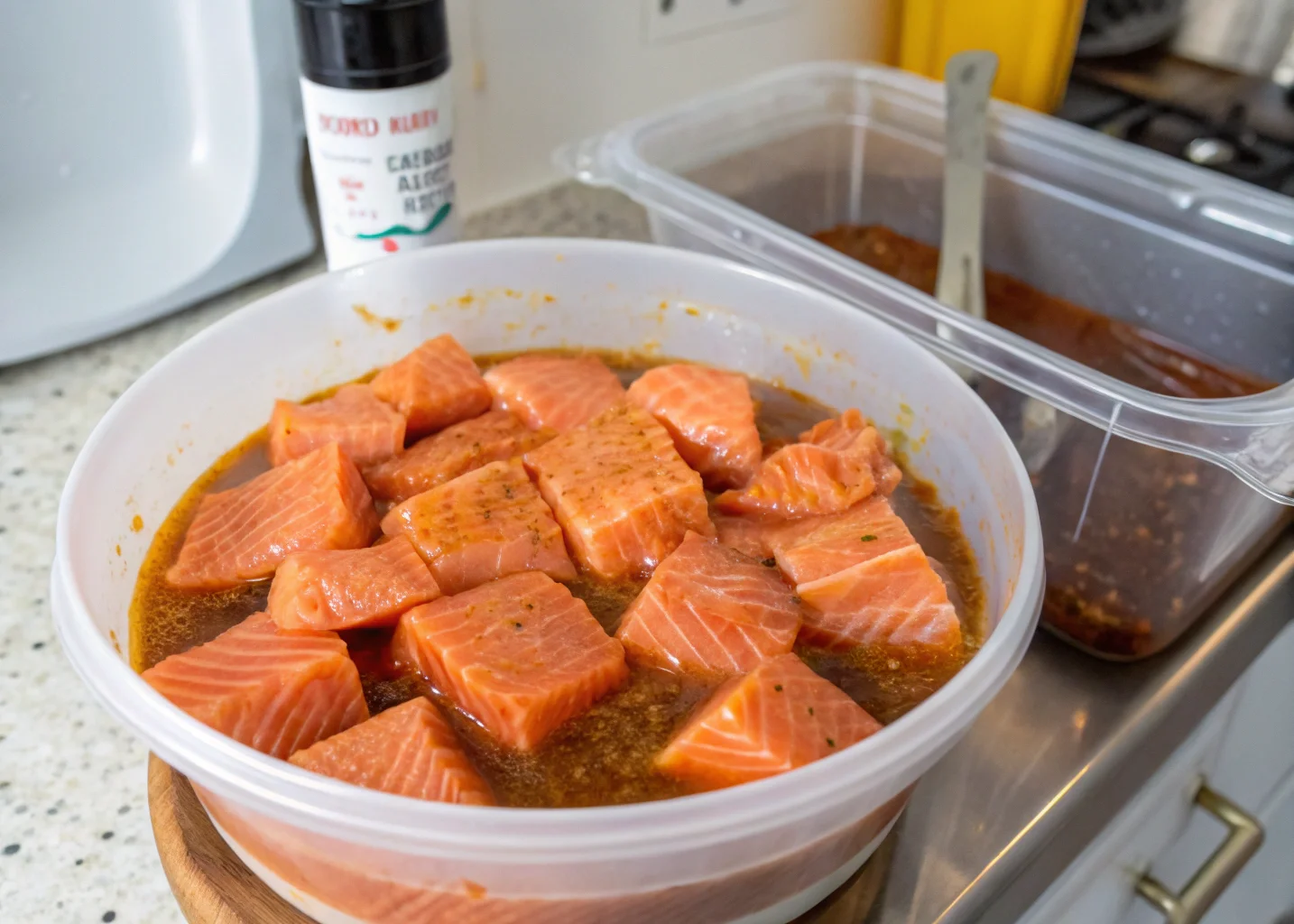
Carefully toss the salmon chunks in the marinade, making sure that every piece is uniformly coated. Allow the mixture to sit in the refrigerator for 10–20 minutes. This enables the fish to take in flavor while maintaining its fresh texture. Refrain from marinating for extended periods, since the acidity may start to “cook” the salmon, changing its texture.
Step 4: Prepare the Base
As the salmon marinates, get your base ready. If you’re using rice, ensure it’s recently cooked and has cooled down to room temperature. For a more nutritious option, choose quinoa or a blend of greens. Gently season your base with a pinch of salt or a splash of sesame oil to improve the overall taste.
Step 5: Assemble Your Poke Bowl
Begin by placing your selected base (rice, greens, or quinoa) at the bottom of the bowl. Place the marinated salmon on top and sprinkle with your preferred toppings. Well-liked pairings feature smooth avocado slices, crisp cucumber, and a dash of sesame seeds. To enhance flavor and vibrancy, think about incorporating pickled radishes or a spoonful of spicy mayo.
Step 6: Final Touches
Top your bowl with a dash of furikake (a Japanese seasoning mix), a splash of soy sauce or ponzu, and some nori (seaweed) slices. For extra crunch, top with fried garlic or crunchy wonton strips.
Step 7: Serve and Enjoy
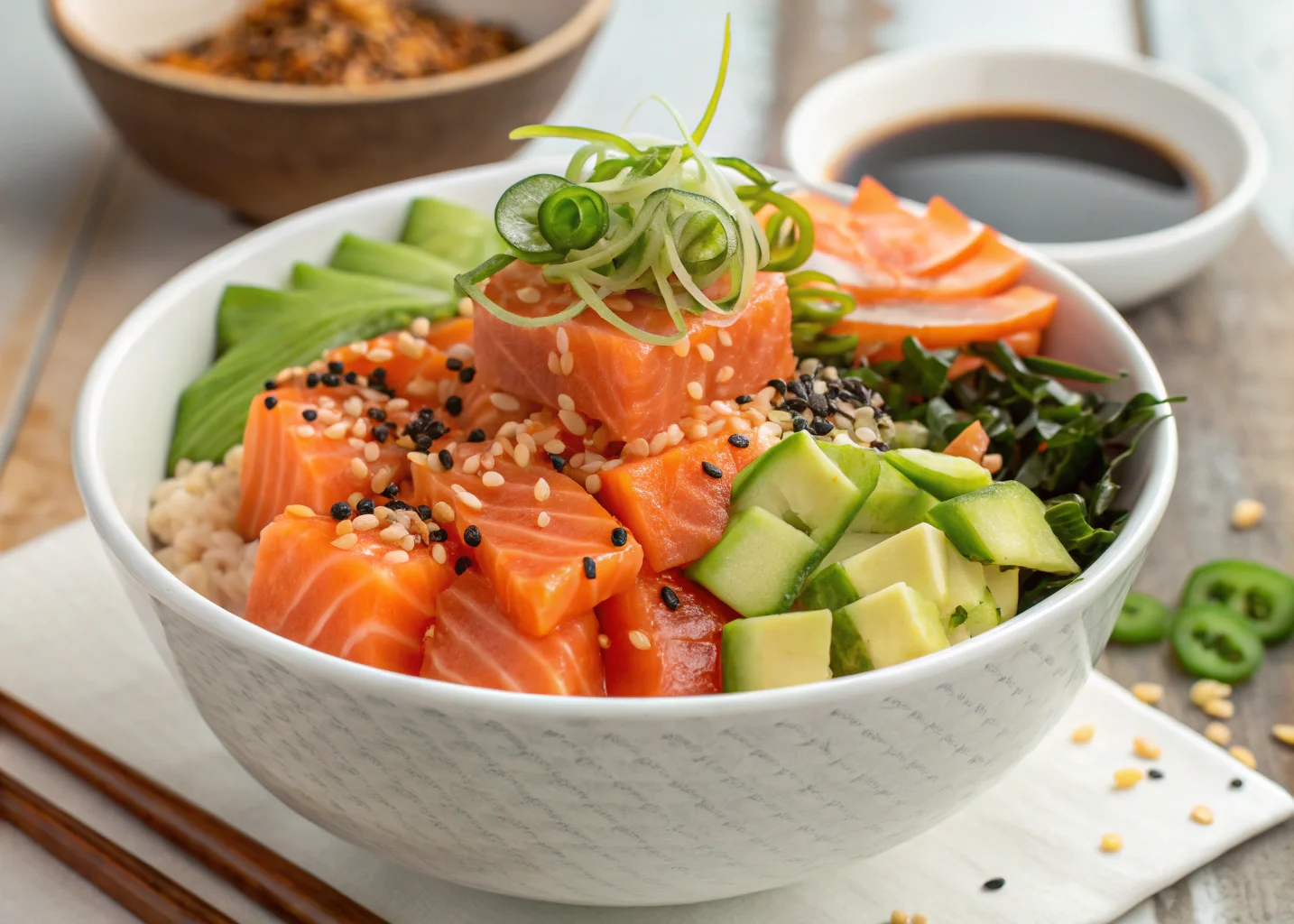
Take a fork or chopsticks and enjoy—you’re now relishing the flavors of Hawaii in your own space.
Nutritional Benefits of Salmon Poke
One of the numerous reasons individuals enjoy salmon poke is its nutritional benefits. This is a nutritious option:
- It is rich in omega-3 fatty acids. These beneficial fats promote heart and brain wellness.
- Loaded with Protein: Sustains your fullness and energy all day long.
- Low in Calories: Traditionally prepared, poke is a guiltless treat.
- Rich in Vitamins and Minerals: Thanks to the fresh vegetables, seaweed, and salmon.
Recipe Table for Salmon Poke
| Ingredient | Quantity | Notes |
| Sushi-grade salmon | 200g (2 cups) | Diced into cubes. |
| Soy sauce | 3 tbsp | For a lighter flavor, use one with a lower sodium content. |
| Sesame oil | 1 tbsp | For a nutty flavor. |
| Rice vinegar | 1 tbsp | Adds tanginess. |
| Honey or mirin | 1 tsp (optional) | Balances acidity with sweetness. |
| Grated ginger | 1 tsp (optional) | Adds a zingy, fresh flavor. |
| Cooked rice or greens | 2 cups | Choose your favorite base. |
| Toppings (e.g., seaweed, avocado) | As desired | Customize to your taste. |
| Crunchy elements | 2 tbsp | Try crispy onions or macadamia nuts. |
Popular Variations of Salmon Poke
Spicy Salmon Poke
If you enjoy spice, this version is ideal for you. Just incorporate sriracha or spicy mayo into your marinade for an added kick.
Wasabi-Infused Poke
For an unusual twist, blend a little bit of wasabi paste into your soy sauce. The outcome is a robust, zesty flavor profile.
Vegan “Salmon” Poke
Not keen on fish? Not an issue. Replace salmon with marinated tofu or diced watermelon. By using the appropriate spices, you can attain a comparable flavor and consistency.
Similar recipes you’ll want to try
- Salmon Bites Recipe – Easy, Crispy, and Delicious Appetizer
- How to Make a Smoked Trout Dip: Taste Amazing
- Salmon Asian Rub Recipe: 7 Ingredients for Perfect Flavor
- How to Make a Cast Iron Salmon Amazing: Tips & Tricks
- Hibachi Salmon: How to Make It Juicy Every Time
- Salmon Poke Bowl
- Nadiya’s salmon poke bowls recipe
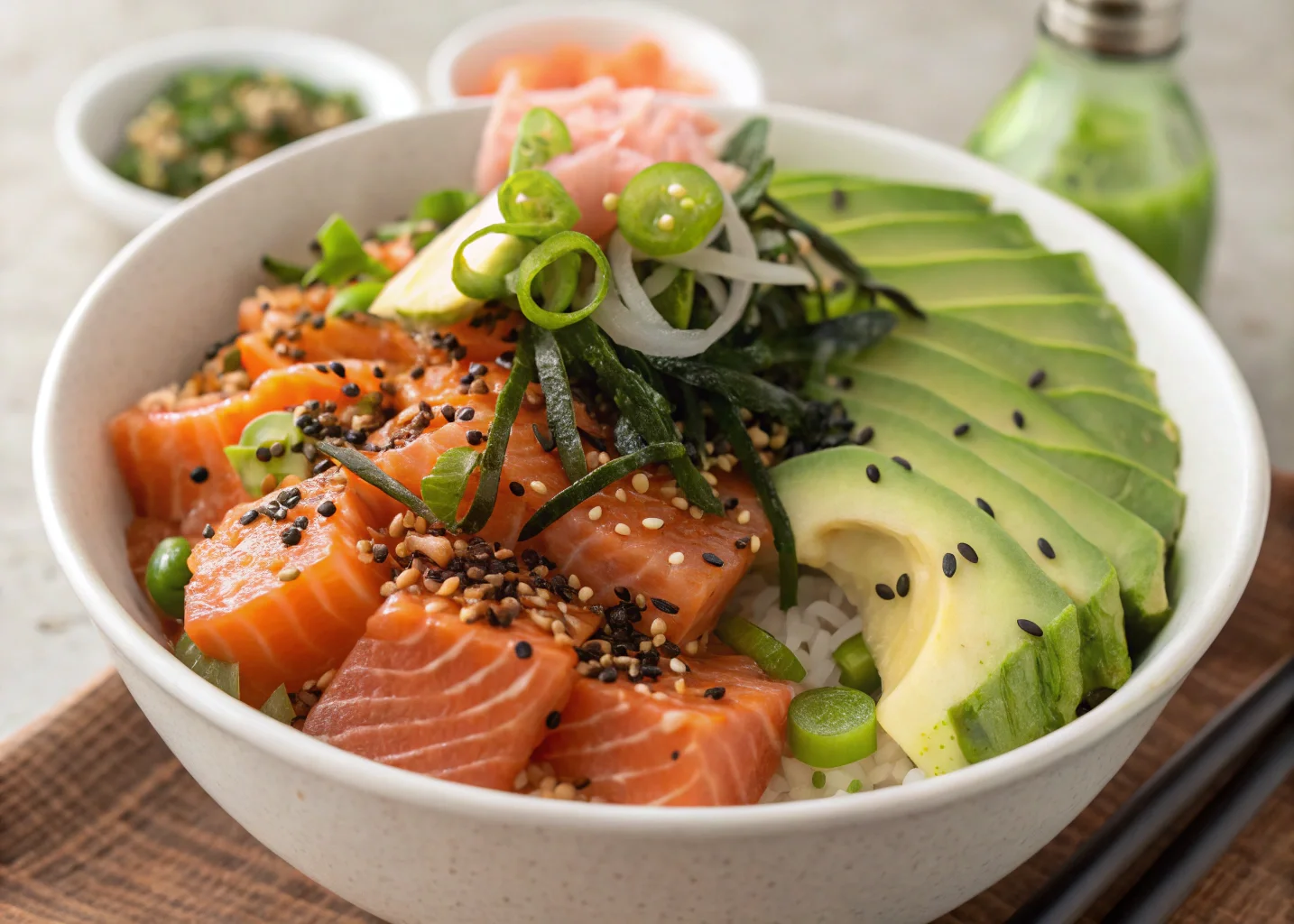
What is Salmon Poke and How is it Made?
Ingredients
- Sushi-grade salmon
- Soy sauce 3 tbsp
- Sesame oil 1 tbsp
- Rice vinegar 1 tbsp
- Honey or mirin 1 tsp optional
- Grated ginger 1 tsp optional
- Cooked rice or greens 2 cups
- Toppings e.g., seaweed, avocado As desired
- Crunchy elements 2 tbsp
Instructions
Step 1: Choose Your Salmon
- A quality poke bowl starts with fresh, sushi-grade salmon. carefully trim it and cut it into even, bite-sized cubes. To achieve the ideal texture, target cubes that are roughly 1/2 inch in dimension.
Step 2: Create the Marinade
- In a medium-sized bowl, combine soy sauce, sesame oil, and rice vinegar. To enhance the flavor, think about adding chili flakes, grated ginger, or chopped garlic.
Step 3: Marinate the Salmon
- Carefully toss the salmon chunks in the marinade, making sure that every piece is uniformly coated. Allow the mixture to sit in the refrigerator for 10
Step 4: Prepare the Base
- If you’re using rice, ensure it’s recently cooked and has cooled down to room temperature.
- For a more nutritious option, choose quinoa or a blend of greens.
- Gently season your base with a pinch of salt or a splash of sesame oil to improve the overall taste.
Step 5: Assemble Your Poke Bowl
- Begin by placing your selected base (rice, greens, or quinoa) at the bottom of the bowl.
- Place the marinated salmon on top and sprinkle with your preferred toppings.
- Well-liked pairings feature smooth avocado slices, crisp cucumber, and a dash of sesame seeds.
- To enhance flavor and vibrancy, think about incorporating pickled radishes or a spoonful of spicy mayo.
Step 6: Final Touches
- Top your bowl with a dash of furikake (a Japanese seasoning mix), a splash of soy sauce or ponzu, and some nori (seaweed) slices.
Frequently Asked Questions (FAQs)
Is it secure to eat crude salmon in poke?
Certainly, provided that you utilize sushi-grade salmon. This kind of fish is processed and frozen in a manner that eradicates harmful parasites, ensuring it is safe for raw consumption.
Can I customize my poke bowl?
Certainly! Poke bowls offer a great deal of customization. You can change the base, try various toppings, or modify the marinade to match your tastes.
How long does salmon poke last?
Poke is most enjoyable when served fresh. Nonetheless, leftovers may be kept in an airtight container in the fridge for as long as 24 hours
What’s the difference between poke and sushi?
Although both meals include raw fish, poke emphasizes marinated fish presented in a bowl with assorted toppings, while sushi usually consists of vinegared rice and particular preparations.
Final Thoughts
Salmon poke is not merely a dish; it’s a tribute to fresh components, vibrant tastes, and cultural traditions. If you need a fast and nutritious lunch or want to wow your dinner guests, salmon poke is the perfect solution. Collect your ingredients, let your imagination run wild, and craft your own personal piece of paradise today.
Leave a Comment
Your email address will not be published.
There are no reviews yet. Be the first one to write one.
